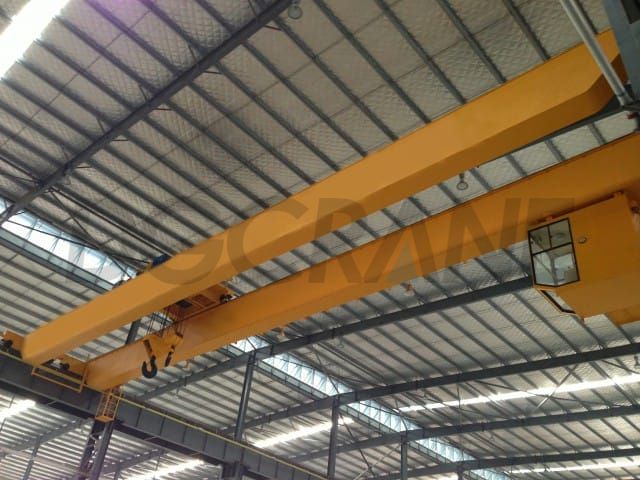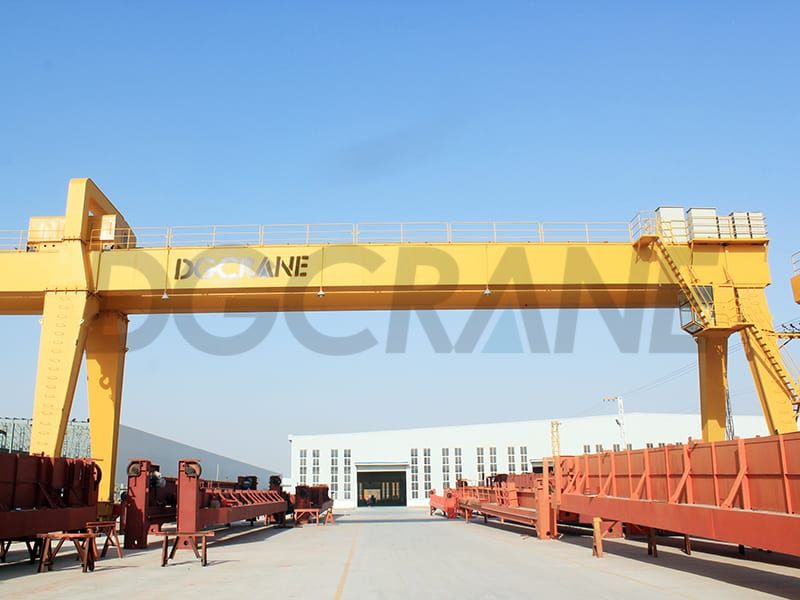There are many different varieties of cranes on the market today, both in terms of size and type. Each type and size serves a different function. In essence, a crane is a machine, which lifts materials up and down as well as horizontally. They are most often used in the construction, manufacturing and transport industries. Cranes are typically used to move and assemble heavy equipment. Crane sizes run the gamut from the enormous ones all the way to much smaller ones which tend to be used in factories and workshops. There are also really tall ones typically used in the construction of tall buildings. The three most common crane types are overhead cranes, gantry cranes and small jib cranes.



Small Jib cranes are a type in which there is a horizontal portion, known as a jib or a boom that supports a hoist, which is movable. The horizontal member of this type of crane is fixed either to a wall or floor-mounted pillar. Jib cranes are most often used on military vehicles or in industrial facilities. The horizontal jib can either be fixed, or it can swing through in an arcing movement, which provides more lateral movement.
Small Jib cranes are typically smaller in size, which make them perfect for industrial purposes. The cranes are often referred to simply as hoists. This is because they are often installed on an upper floor area of warehouses so they can lift material in the warehouse to any and all floors.
There are several different types of small jib cranes, including the wall crane and the hammerhead crane, both of which share many similarities with the boom crane. All of these varieties consist of an arm that suspends a hoist rope, hook and block. The difference between the majority of boom cranes and the jib crane is the fact that these cranes are not adjustable to maneuver at a specific angle. Rather, a small jib crane is locked in a fixed horizontal position.
With all types of cranes, taking the proper safety measures prior to and during operation is vital. This is because cranes can be very dangerous if used improperly by untrained operators, with the consequence being the potential for accidents causing serious injury or even death. Even though jib cranes are among the smaller breed of cranes, proper use and safety is still extremely important. Before engaging in use of a crane, you must check it to ensure there are no bent supports and that it is not misaligned at all. Anyone operating a crane must be knowledgeable in the jib arm’s range of motion, as well as the location of the Emergency Stop Button and Overload Indicators. An operator must be trained in when and how to use these buttons, along with overall training on the operator of the crane.
With the proper experience and training, small jib cranes can be extremely safe and useful on any job. Due to their size, they can fit inside many large indoor premises, which require the use of a crane to lift materials onto or from many different levels. Remember to always put safety first when getting the job done.

Zora Zhao
Expert in Overhead Crane/Gantry Crane/Jib Crane/Crane Parts Solutions
With 10+ years of experience in the Crane Overseas Export Industry, helped 10,000+ customers with their pre-sales questions and concerns, if you have any related needs, please feel free to contact me!
WhatsApp: +86 158 3611 5029
Email: zorazhao@dgcrane.com
Related Blogs
Subscribe to our newsletter
The latest DGCRANE price list, news, articles, and resources.
CRANE PARTS
- Forged Crane Wheels
- Gantry Crane Wheels Block Assembly
- Steel Crane Rail Systems for Overhead and Gantry Cranes – High Durability and Performance
- Cost Effective Overhead Crane C-Hooks for Steel Coil Lifting and Container Loading and Unloading
- Overload Limiter
- Crane Buffers
- Crane Wheel Block Assembly
- Crane Wheels
- Crane Hooks
- Crane Rope Drums
- Crane Cabin
- Crane Sheaves
- Crane End Carriages
- Crane Coupling
- Crane Spreader
- DRS Wheel Blocks System
- Crane Power Supply System
- Other Crane Parts
INDUSTRIES
COMPANY
- sales@dgcrane.com
- +86-373-3876188
- +86 158 3611 5029
- Floor 30,Gongyuan INT'I Building, Jinsui Road, Xinxiang City, Henan Province, China























































































